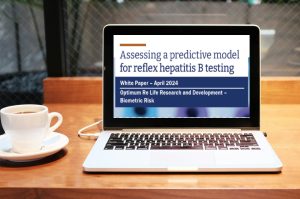“Deaths of Despair,” an article recently appearing in the Wall Street Journal (WSJ), should have red flags flying throughout the underwriting community. As reported in the Journal, among individuals 20-55 years of age “substance abuse, suicides, and diabetes drove a rise in premature deaths in nearly half of the U.S.” The WSJ data, originally published in the Journal of the American Medical Association (JAMA), comes on the heels of data published earlier this year by the National Center for Health Statistics that reports life expectancy in the United States has declined for two consecutive years. This is the first consecutive year that life expectancy has declined in 55 years.
 The Journal highlights the fact there is wide variation in where this early death trend is seen. Deaths in the population aged 20-55 increased in 21 states and declined in 29 states. Primary drivers of these early deaths include substance abuse, mental health issues, cirrhosis and diabetes.
The Journal highlights the fact there is wide variation in where this early death trend is seen. Deaths in the population aged 20-55 increased in 21 states and declined in 29 states. Primary drivers of these early deaths include substance abuse, mental health issues, cirrhosis and diabetes.
The increase in diabetes deaths should not come as a surprise given the current obesity epidemic. Insurers have responded to this epidemic through widespread A1c screening. ExamOne is also seeing an uptick in insurer opioid screening in light of the explosion in opioid deaths. The Journal reports deaths attributed to opioid use disorders from 1990 to 2016 increased by a whopping 343%.
Questions to consider
Will the mining of publicly available laboratory information and data analytics used in accelerated underwriting programs be able to compensate for the increased deaths noted above?
Financial and other socio-economic data may help identify applicants at a greater risk for suicide, but how will the accelerated underwriting models identify the opioid and diabetes risks?
While utilization of prescription drug databases may identify some younger diabetics, we know from extensive laboratory data that an elevated A1c is frequently the first sign of glucose intolerance or diabetes.
 If you haven’t already done so, underwriting leaders need to speak with pricing actuaries on how this study impacts accelerated underwriting programs. The age group between 20 and 55 years of age represents the sweet spot for accelerated underwriting. How do companies plan to react to these data since we know that just an additional death or two in the younger age mortality cells can totally erode product profitability? Will companies using accelerated underwriting programs be able to tweak underwriting guidelines to react to these adverse mortality trends? Will they accept lower profit margins if accelerated underwriting cannot detect this upswing in younger age diabetes and opioid deaths?
If you haven’t already done so, underwriting leaders need to speak with pricing actuaries on how this study impacts accelerated underwriting programs. The age group between 20 and 55 years of age represents the sweet spot for accelerated underwriting. How do companies plan to react to these data since we know that just an additional death or two in the younger age mortality cells can totally erode product profitability? Will companies using accelerated underwriting programs be able to tweak underwriting guidelines to react to these adverse mortality trends? Will they accept lower profit margins if accelerated underwriting cannot detect this upswing in younger age diabetes and opioid deaths?
The time to have these conversations is now.




















“Deaths of Despair,” an article recently appearing in the Wall Street Journal (WSJ), should have red flags flying throughout the underwriting community. As reported in the Journal, among individuals 20-55 years of age “substance abuse, suicides, and diabetes drove a rise in premature deaths in nearly half of the U.S.” The WSJ data, originally published in the Journal of the American Medical Association (JAMA), comes on the heels of data published earlier this year by the National Center for Health Statistics that reports life expectancy in the United States has declined for two consecutive years. This is the first consecutive year that life expectancy has declined in 55 years.
The increase in diabetes deaths should not come as a surprise given the current obesity epidemic. Insurers have responded to this epidemic through widespread A1c screening. ExamOne is also seeing an uptick in insurer opioid screening in light of the explosion in opioid deaths. The Journal reports deaths attributed to opioid use disorders from 1990 to 2016 increased by a whopping 343%.
Questions to consider
Will the mining of publicly available laboratory information and data analytics used in accelerated underwriting programs be able to compensate for the increased deaths noted above?
Financial and other socio-economic data may help identify applicants at a greater risk for suicide, but how will the accelerated underwriting models identify the opioid and diabetes risks?
While utilization of prescription drug databases may identify some younger diabetics, we know from extensive laboratory data that an elevated A1c is frequently the first sign of glucose intolerance or diabetes.
The time to have these conversations is now.